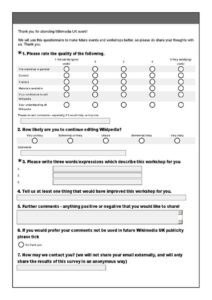Leveraging these frameworks offers several advantages. Clear, concise requests improve communication efficiency and increase the likelihood of prompt responses. Consistent formatting simplifies scheduling management for both organizers and participants. Furthermore, pre-built structures can be readily adapted to various meeting types, from routine check-ins to formal project discussions, contributing to overall organizational efficiency.
This foundation of effective meeting requests allows for a deeper exploration of best practices in scheduling, communication protocols, and strategies for productive meetings. The following sections will delve into these topics, offering practical guidance and actionable insights for maximizing meeting effectiveness.
Key Components of a Meeting Request
Effective meeting requests contain essential elements that ensure clarity and facilitate efficient scheduling. These components contribute to seamless communication and reduce the likelihood of misunderstandings.
1. Subject Line: A concise and informative subject line clearly communicates the meeting’s purpose, enabling recipients to prioritize and identify the topic at a glance. Examples include “Project Alpha Update” or “Marketing Strategy Review.”
2. Purpose/Objective: A brief explanation of the meeting’s goal ensures all participants understand the intended outcome and can prepare accordingly. This clarifies expectations and promotes focused discussion.
3. Date and Time: Clearly stating the proposed date and time, including time zone information for geographically dispersed teams, is crucial for scheduling. Offering alternative times can increase scheduling flexibility.
4. Location: Specifying the meeting location, whether physical or virtual (e.g., conference room, video conferencing link), allows participants to plan logistics and access the meeting seamlessly.
5. Attendees: Listing all required and optional attendees ensures the right individuals are involved and aware of the meeting. Clearly identifying required participants helps prevent scheduling conflicts.
6. Agenda: Providing a preliminary agenda outlines the topics to be discussed, allowing participants to prepare contributions and ensuring focused, productive discussions.
7. Required Preparation: If pre-reading or other preparatory tasks are necessary, outlining these expectations ensures participants arrive prepared, maximizing meeting efficiency.
Careful consideration of these elements contributes to well-organized, productive meetings. Clear communication of these details ensures all participants are informed and prepared, fostering effective collaboration and efficient use of time.
How to Create a Meeting Request Template
Creating a standardized meeting request template ensures consistency and efficiency in communication. A well-structured template facilitates clear communication of essential information, reducing ambiguity and scheduling conflicts.
1. Define the Purpose: Determine the template’s intended use. Consider the types of meetings the template will be used for (e.g., project updates, team check-ins, client meetings).
2. Choose a Format: Select a suitable format (e.g., email, calendar invite, dedicated software). The chosen format should align with organizational practices and communication preferences.
3. Structure the Template: Incorporate key components such as a clear subject line, meeting purpose, date and time options, location details (physical or virtual), attendee list, and a preliminary agenda.
4. Include Placeholder Text: Utilize placeholder text within the template to guide users in filling specific information. This ensures consistency and completeness in meeting requests.
5. Establish Naming Conventions: Implement clear naming conventions for the template file to ensure easy identification and retrieval. Version control can also be beneficial for managing updates.
6. Test and Refine: Pilot test the template within a small group to gather feedback and identify areas for improvement. Refine the template based on user experience and identified needs.
7. Distribute and Train: Distribute the finalized template to all relevant personnel. Provide clear instructions and training on its proper use to ensure consistent application.
A well-designed template, consistently applied, streamlines scheduling, improves communication, and promotes productive meetings throughout the organization. Regular review and updates ensure the template remains aligned with evolving needs and best practices.
Standardized frameworks for meeting requests provide a crucial foundation for effective communication and efficient scheduling. From ensuring clarity in purpose and logistics to facilitating preparation and promoting productive discussions, a well-structured approach minimizes ambiguity and maximizes meeting value. Key components such as a concise subject line, clearly defined objectives, and a detailed agenda contribute to a streamlined process, benefiting both organizers and participants. The development and implementation of tailored templates, coupled with consistent usage, further enhance organizational efficiency and promote a culture of effective collaboration.
Optimizing meeting practices represents a continuous improvement process. Regular evaluation of template effectiveness, incorporation of user feedback, and adaptation to evolving organizational needs ensure continued relevance and sustained benefits. By prioritizing clarity, consistency, and purposeful communication, organizations can transform meetings from potential time drains into valuable opportunities for collaboration and progress.

